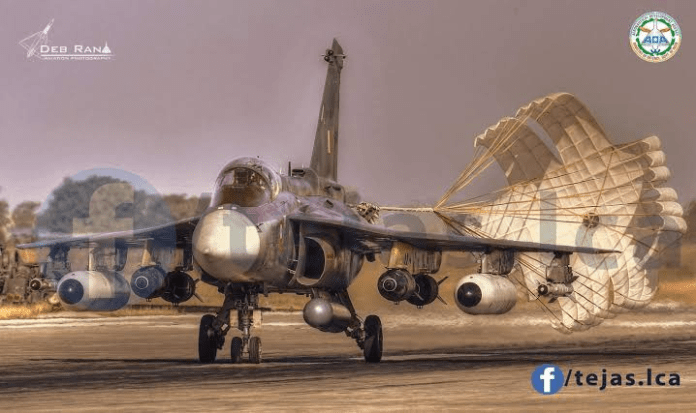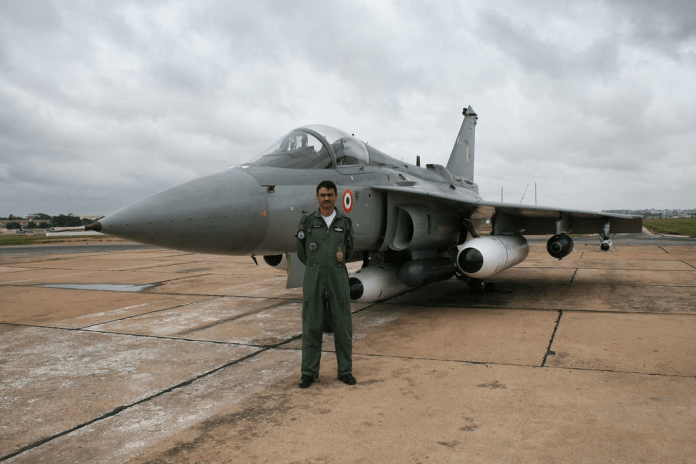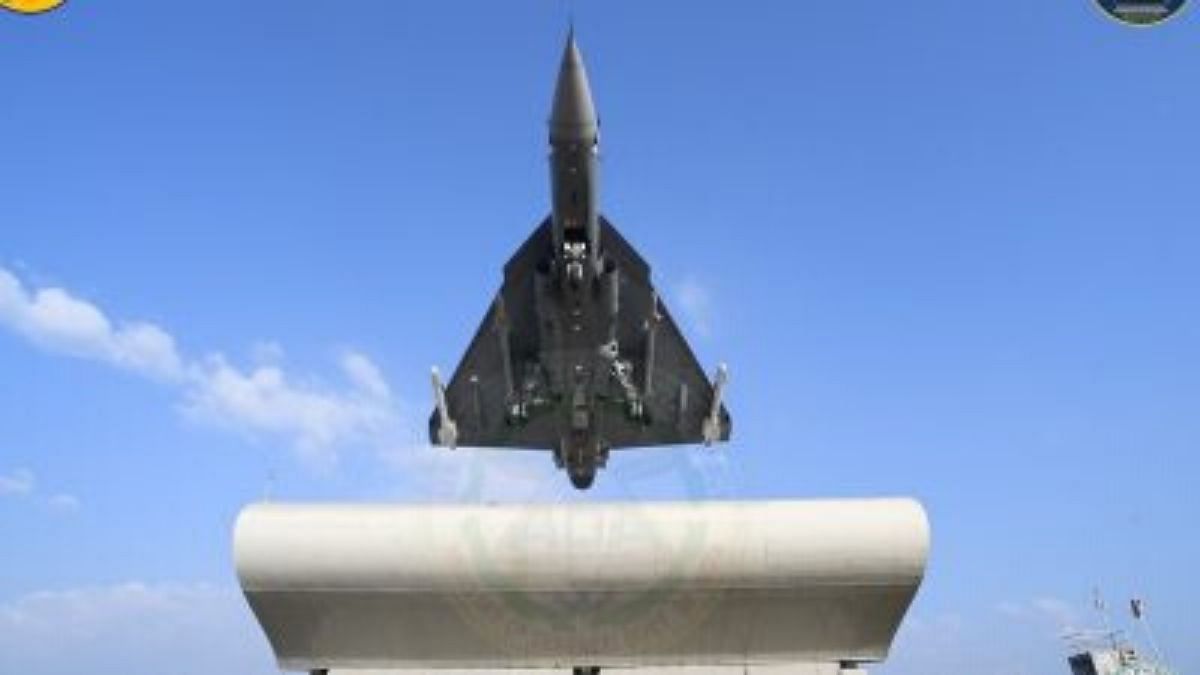Over the past few years, India has been looking to change course from being one of the world’s largest importers of military equipment to achieving strategic independence through local manufacturing and procurement. One of the flagship projects being progressed in aid of this objective, is the Light Combat Aircraft (LCA) Tejas fighter programme. Recently, while answering questions on the prospect of importing 114 more fighter jets through a global tender, the Chief of Defence Staff (CDS) & Secretary, Department of Military Affairs, Bipin Rawat said:
“The Indian Air Force is switching that to the LCA. The IAF is saying, I would rather take the indigenous fighter, it is good.”
The above remark has unsurprisingly caused a degree of consternation in the usual circles. Now, if the history of media coverage about the Tejas’s development is any indication, it can be reasonably expected that articles taking a rather dim view of the Tejas’s rise, would also emerge in the press sooner than later. In fact, the
first such article may have already arrived, as if on cue.
This article, from the Times of India (TOI), regurgitates (scroll to item no. 2 in the said article) much of the incorrect information about the Tejas’s capabilities that has been in circulation for quite some time now. In our own piece, we will factually debunk this inaccurate information by employing rather elementary concepts of aerodynamics.
For the purposes of the same, we will compare the Tejas Mk1 (40 on order, with 17 delivered) and Mk1A (83 units to be ordered soon) with the Gripen C/D and the F-16 IN. It should be noted that the Gripen E/F will not be available before 2023 at the earliest. By that time, India’s Medium Weight Fighter (MWF) or Tejas Mk2 is expected to take to the skies and
will be comparable to the Gripen E/F in just about every aspect. Therefore, if a comparison has to be made with the Gripen E/F, it should be against the MWF, not Tejas Mk1/Mk1A. So, let us begin by listing out each fallacy in the TOI article followed by a fact-based rebuttal.
Fallacy 1. For one, its combat “endurance” — the time an aircraft can last without replenishing its resources — is not even an hour compared to 3 hours for the JAS 39 Gripen manufactured by the Swedish aerospace company Saab and almost 4 hours for the US-made F-16, the two aircraft shortlisted by the IAF to boost its depleted squadron strength.
Truth: The endurance of an aircraft is determined by four primary factors, the fuel fraction, the lift-to drag ratio, the specific fuel consumption of the engine and the mission profile. The fuel fraction is simply the fraction of the aircraft’s weight covered by fuel. It is a key measure of endurance because it nullifies the effect of the particular size of the various aircraft being compared. The higher the fuel fraction, the better the endurance. The fuel-fractions of the Gripen C/D, the F-16 and the Tejas under various internal and external fuel tank conditions are covered in Table 1 below. As we can see, they are quite close to each other in terms of magnitude. Next comes the specific fuel consumption (SFC) of the engine. The Tejas and the Gripen C/D use the same engine, while the engine of the F-16 has near identical SFC. Next comes the lift-to-drag-ratio. It is a measure of aerodynamic efficiency that specifies the penalty the aircraft pays in order to fly through the air. These numbers are classified. However, for all modern aircraft, these numbers, especially those related to long endurance i.e. cruising are very similar. In fact, they are within 5 percent of each other.
| Weight | Fuel fraction | | | | | |
| clean take off weight | internal fuel | max external fuel | typical external fuel | internal only | maximum external fuel | typical external fuel |
| Gripen C/D | 10 | 2.3 | 2.64 | 1.76 | 0.23 | 0.39 | 0.35 |
| F-16 (without CFTs) | 13.28 | 3.175 | 4.543 | 3.63 | 0.24 | 0.43 | 0.40 |
| LCA | 9.8 | 2.485 | 2.56 | 1.92 | 0.24 | 0.40 | 0.37 |
*Weights in tons. #CFT= Conformal Fuel Tank
Table 1: Fuel Fraction Comparison involving the LCA Tejas, the F-16 & the Gripen C/D
If all these critical aerodynamic parameters are near identical then how can the Tejas have only 1/3rd or 1/4th the endurance of a Gripen or a F-16 respectively, as is being claimed?
Of course, it doesn’t! The Tejas regularly flies non-stop between Bengaluru and Jodhpur & Bengaluru and Jaisalmer for various trials and exercises. For example, flying between Bengaluru and Jaisalmer with two 1200 litre (l) drop tanks, the aircraft lands with 800 kg of fuel still onboard even after flying for 2.5 hours! In fact, these flights are regularly done at 28,000 feet (because of air traffic regulations) instead of 35,000 feet where the endurance will be even greater. Taking all these aspects into account it is easy to see why the endurance of the Tejas Mk1 and Mk1A is above 3 hours, pretty much like that of the Gripen C/D and the F-16, with whom it is being compared. With CFTs, the F-16IN can fly longer for about 4 hours.
Fallacy 2. G
iven that the Tejas can carry half the weapons payload — of 3 tonnes — vis-a-vis the Gripen (6 tonnes) or the F-16 (7 tonnes), means twice the number of Tejas aircraft will need to be deployed in combat
Truth: First of all the maximum payload of the Tejas is not 3 tonnes. Images 1& 2 below show the Tejas in standard strike configurations in IAF service. These payloads are easily over 3.5 tons.
Image 1: LCA Tejas LSP with an all up weight of about 14 tons and payload of about 3.5 tons.
Image 2: LCA Tejas LSP with an all up weight of about 14 tons and payload of about 3.6 tons.
Occasionally, it has been flight tested with even higher payloads.
Image 3. below shows a Tejas after a test flight with 4.05 tonnes (t) of payload. Notice that aircraft in Images 1,2 & 3 are Limited Series Production (LSP) test-units with 300 kg of flight instrumentation. In-service aircraft will obviously fly without such instrumentation and therefore can gain up to 0.3 t of extra payload capacity. Which means that their max payload capacity is roughly 4.35 t and not 3 t as has been claimed in the TOI article.
Image 3: The Tejas with 4.05 tonnes of payload
Now, how is this payload capability calculated? The designers simply take the maximum take off weight (MTOW) of the Tejas Mk1 which is about 14.1 t and subtract its clean takeoff weight (i.e. full internal fuel and no payload) of 9.8 t from the former. This gives a payload capacity of approximately 4.3 t. Now let us look at the claim for the Gripen made in the TOI article. First of all 6 t is the payload capacity of the Gripen E/F, an aircraft which will not become available before 2023 and not that of the Gripen C/D which is currently in service with some Air Forces around the world. The Gripen E/F’s Indian compatriot, i.e. the MWF is currently being designed to be capable of flying with a maximum 6.5 t of payload and is expected to begin test flights by 2023. Returning to today’s reality, the clean and maximum take-off weights of the Gripen C/D are 10 t and 14 t respectively. Using Tejas-like calculations the payload should be 4 t (i.e. similar to that of the Tejas). Then how is that the Gripen C/D is advertised as having a maximum payload of 5.3 t, you may ask? This brings us to the magic of marketing, of which both DRDO and HAL are bereft (more on that some other day!). Gripen can take off with 5.3 t of payload, only if it significantly sacrifices on the carriage of internal fuel. But what good is such a configuration in operational service? Nothing, it just makes the brochures look better.
The F-16 on the other hand does have a significantly higher payload capacity than either the Tejas or the Gripen C/D. That is a given considering its significantly larger size. But with a payload of 7 t, the F-16 becomes what is colloquially called a bomb-truck. Its flying qualities degrade considerably at max payload, something that can be reasonably allowed only when conducting operations in permissive airspace, such as over Afghanistan for instance. However, does India have that luxury along its borders?
On the other hand, one of the quintessential operational requirements for Indian borders is the ability to operate from high altitude airfields during hot summers. ‘Hot and high’ conditions severely impede any aircraft’s lift generation capability and thereby payload capacity. This is especially true of fighter aircraft with small wings. Image 4 below shows the Tejas being prepared for flight during hot weather trials at Leh Airfield, which is at an altitude of 10,682 feet above mean sea level, with a payload of about 3.2 t. Once again, bear in mind that this is a test aircraft with 300 kg of extra instrumentation onboard. Forget the two fighter aircraft it is being compared to, taking off with 3.5 t of payload during summer at Leh is near the what twin-engined medium-weight fighter can accomplish, while operating in similar conditions. This is not surprising because the wing area of the Tejas is comparable to that of medium weight fighters.
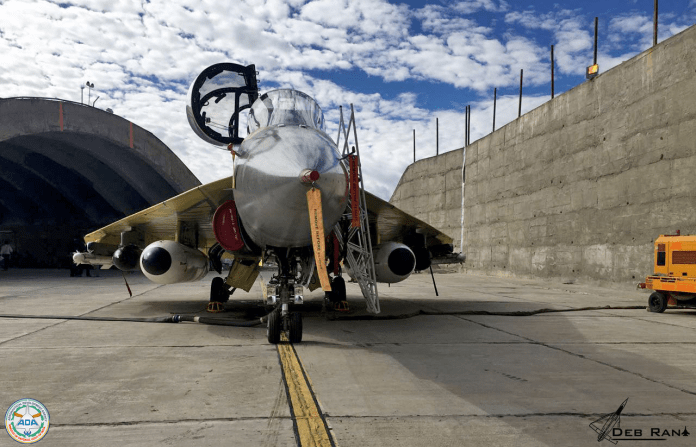
Image 4: The Tejas during hot weather trials at Leh, at an altitude of over 10,000 feet above mean sea-level.
Finally, this writer would like to take note of the “twice the number of Tejas aircraft will need to be deployed in combat”, bit mentioned in the TOI article. Now, the bill for 114 aircraft is currently estimated to be north of $15 billion. And this is a conservative estimate given that India paid over $8 billion for 36 Rafales. In comparison, the price of 83 LCA Tejas Mk1As has been finalized to be a mere $5.2 billion.
Twice the number of Tejas would still be cheaper by any measure!
Fallacy 3.
The lifespan of the Tejas is 20 years against the 40 years of the Gripen and the F-16.
Truth: First of all, the lifespan of aircraft is not measured in years, but flight hours. The most critical aspect on which the lifespan of a modern fighter aircraft depends is the durability of the engine that powers it. Over the course of its service life, a modern jet-powered single-engined fighter aircraft typically ends up using about 3.5 engines. Once again, the Tejas employs the same engine as that the Gripen C/D whose life is comparable (slightly better) than the engine employed by the F-16! I
n terms of structure, the Tejas, using contemporary manufacturing techniques, employs one of the highest amount of composites by weight (See Fig 1.). It is unclear how the same material and composites used by the Tejas are structurally half as good as that of the Gripen C/D’s or F-16’s. The truth is that the in-service fatigue life of the Tejas is yet to be ascertained. As per sources, an initial conservative estimate of 9000 flying hours has been arrived at. Each of the in-service Tejas units are fitted with a Health Up Monitoring System (HUMS) to measure airframe fatigue and come up with revised estimates for service life. By all indicators this estimation of 9000 hours is going to be revised upwards! This is nothing new. The F-16’s and the Gripen’s lifespan also saw such revisions over the course of their time in service. When the F-16 first flew, its service life was estimated to be 6,000 hours. It was revised upwards to 8,000 hours subsequently and this has only recently been further pushed up to about 12,000 hours. One can expect the Tejas to also see similar upward revisions in its estimated service life over the years.

Fig 1. LCA Tejas has one of the highest usage of composites by weight.
A note on top speed. The respective maximum speed of these aircraft has been correctly reported in the TOI article. But then, these speeds are brochure numbers, including that of Tejas’s. These are derived by putting an aircraft in ‘clean’ configuration (i.e. sans payload) through a shallow dive while on full afterburner. The maximum speed is obtained when almost all the fuel is used up. Operationally, such capability is of little consequence. What matters more is the ability to accelerate quickly to some reasonable Mach number while climbing up to launch beyond visual range air to air missiles (BVRAAMs) at long ranges. Here, it must be stated, that the Gripen C/D and the F-16 do indeed enjoy an edge over Tejas. Nevertheless, some design optimizations to reduce the Tejas’s transonic and supersonic drag have been identified, but are yet to be effected. However, top speed for fighter aircraft has been a declining fad, especially since the advent of 4th generation fighters, such as the types being compared in this article. In fact, throughout the life of the F-16, and now the Gripen’s and the Tejas’s, successive variants, have, generally speaking, become more sophisticated and heavy at the expense of top speed. In fact, in operational service, the Tejas is software limited to 1.6 Mach.
In the Indian setup, test-pilots are typically drawn from the IAF. The pilots of the first operational squadron of the Tejas called the
Flying Daggers are co-located with the designers and manufacturers. Their feedback has been readily absorbed to make the fighter better. No request till date has been made to increase the top speed of the Tejas beyond 1.6 Mach, however.
Fallacy 4.
The service time (hours per 1 hour of flying) is 20 hours for the Tejas, 6 hours for the F-16 and 3.5 hours for the Gripen
Truth: This is another of those allegations against the Tejas that does not stand up to scrutiny. During Aero India 2019, almost every Tejas aircraft deputed for flying display executed over 2-3 sorties per day. The same was repeated overseas during airshows at Bahrain and Lima. Operationally, during the IAF’s Ironfist and VayuShakti exercises, participating Tejas aircraft made 3 bomb runs a day. The availability of the aircraft in all these airshows and exercises has been described as exceptional. Mind you, these aircraft were either test prototypes or those just entering service. With time, their serviceability and availability will only get better. In this context, another recent achievement of Team LCA must be emphasized.
The naval avatar of the LCA design recently became the first Indian designed and manufactured aircraft to land on an aircraft carrier. This is a first for India’s designers and Tejas maintainers, many of whom had never even been on an aircraft carrier prior to the aforesaid achievement. Yet, for such a nascent program, both the employed test prototypes performed 3 takeoffs and 3 landings during the course of their second day onboard the ship itself. On the third day, one of the aircraft made 3 back-to-back sorties with hot-refueling for a flight time of nearly 3 hours. The above mentioned examples signify a flying tempo which is at par or above any of the IAF’s in-service aircraft types. Such a tempo cannot be maintained by an aircraft design whose serviceability is supposedly 3-6 times worse than its contemporaries as is being alleged in the TOI article.
Conclusion
These uninformed attacks on the Tejas are nothing new. In fact, it is to be expected. The day before its first flight, the then defence minister, George Fernandes got a letter stating:
“Please do not allow the first flight of the Light Combat Aircraft to take place. The aircraft has not been developed with adequate rigour, and safety aspects have not been fully looked into. It would be a catastrophe if you allow it to fly.”
To his credit, Fernandes did not pay heed to the unsolicited advice and placed his trust in Team LCA, instead. He did not tell anybody about the letter till after the first flight was complete and the aircraft was safely back on the ground. The rest, as they say, is history. The Tejas has been flying around for the last 20 years without a single accident. This is a rare, if not unprecedented, occurrence in military flight testing. We are standing at a crossroads again. We can either make provisions to accelerate and stabilize the Tejas’s production and reap the benefits of manufacturing at scale, or fall back on the tired old lure of “license production” and “transfer of technology”. On the Tejas’s shoulder stands the coming of age of India’s military aviation industrial complex. On its maturity, lies the future of not only fighter programs like the MWF,
the twin-engined deck based fighter (TEDBF), the Omni Role Combat Aircraft (ORCA) and the
AMCA, but also trainers and unmanned aerial vehicles. The time for being ‘Vocal about Local’ is now.

delhidefencereview.com
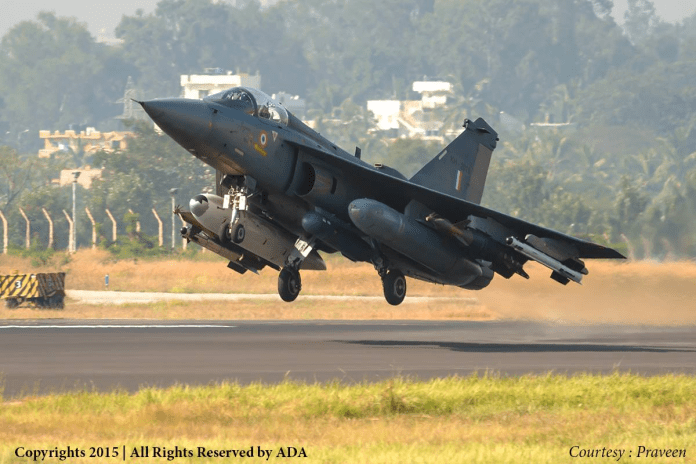
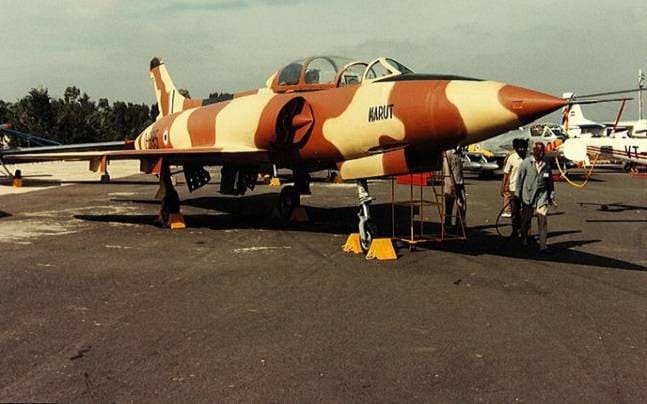 HF-24 Marut. Source: Wikipedia Creative Commons
HF-24 Marut. Source: Wikipedia Creative Commons
 Source: Aeronautical Development Agency
Source: Aeronautical Development Agency
 Source: Aeronautical Development Agency/ Rana
Source: Aeronautical Development Agency/ Rana
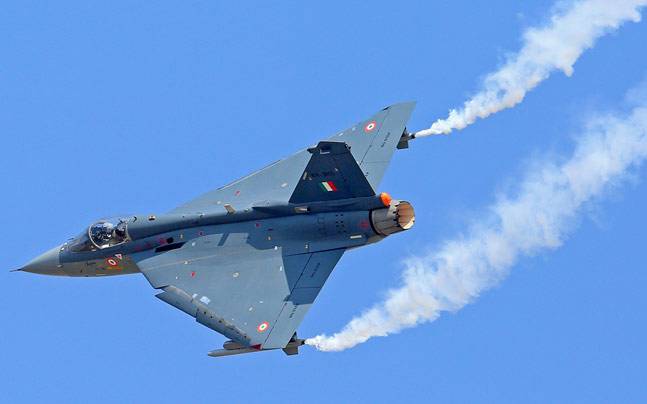
 www.google.com
www.google.com




